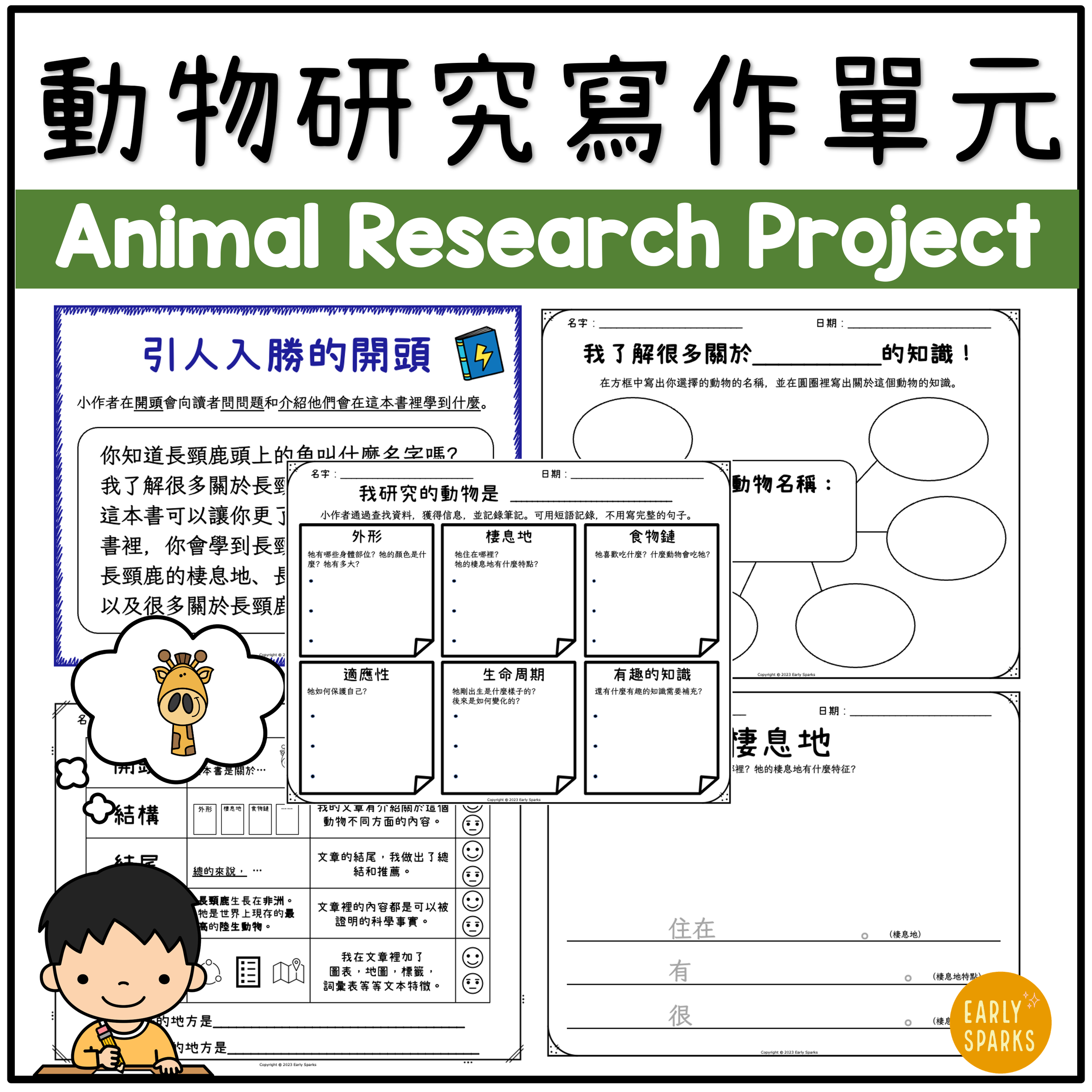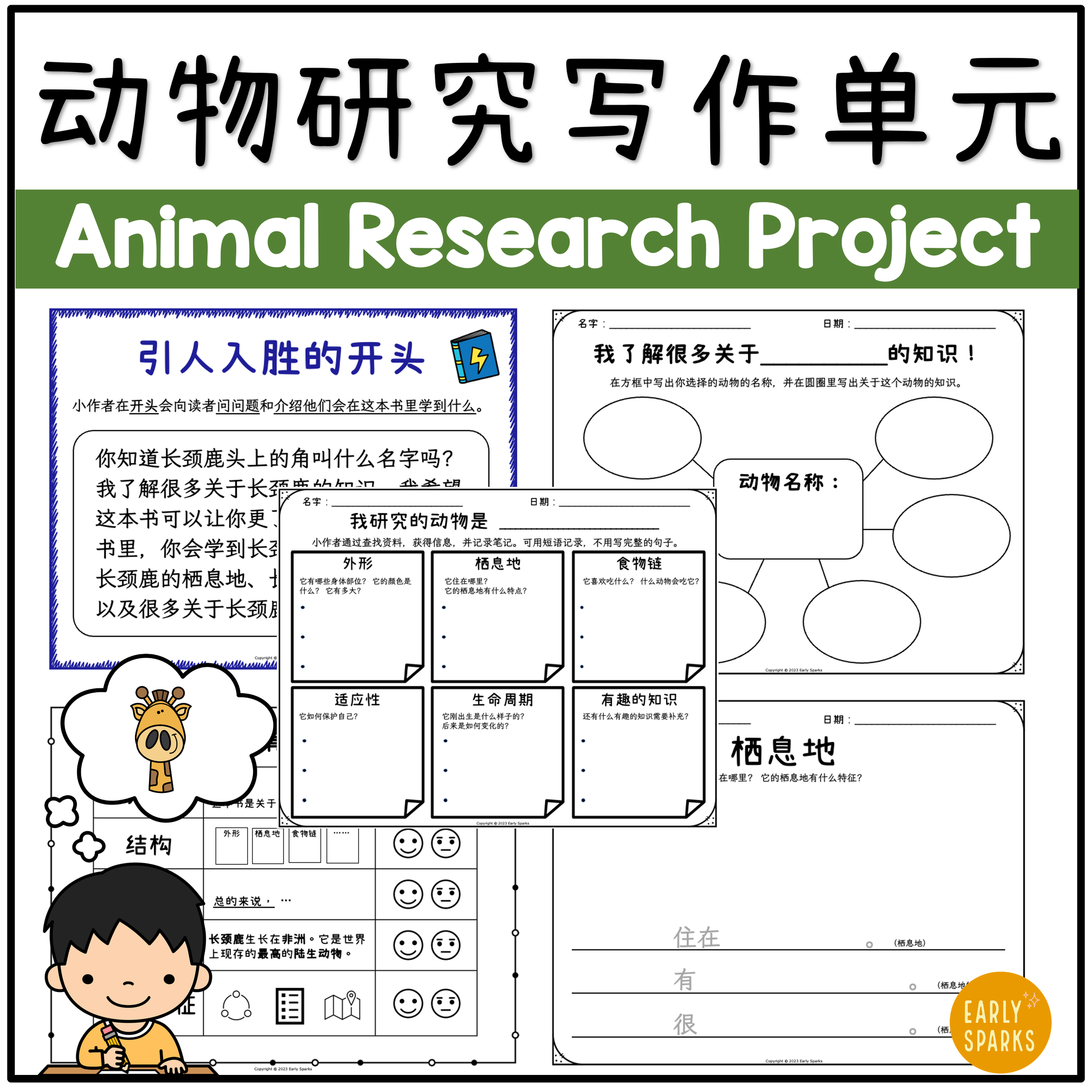Informational Writing in Chinese: All About Books
What is Informational Writing?
In short, informational writing is all about facts! When introducing the informational writing unit to my students, I tell them they are going to be EXPERTS on some topics and teach their readers about this topic by using facts that are true. Informational writing is an excellent way to encourage students to explore the world around them and learn from each other.
How to Teach Informational Writing?
Step 1: Pick a Topic
There is a Chinese saying “兴趣是最好的老师”. It means that having an interest or passion for something is the best way to learn about it. When your Chinese learners are interested in a topic, they are more likely to be motivated to learn and explore it! Students can pick a topic they know A LOT about or a topic they want to learn more about.
Step 2: Brainstorm and Research
After students pick their topic, they will first jot down facts they know about the topic and conduct research. Researching skills are critical for young learners because they learn to analyze information and summarize key concepts in the process. Students can find nonfiction books in the classroom library or use technology devices to gather more information about their topics. They can also conduct research at home under their parents’ guidance.
Step 3: Organize the information
Informational Writing is organized in a logical and easy-to-follow manner. Graphic organizers are fantastic tools for young learners to gather and sort facts under different sub-topics/headings.
Step 4: Write the Draft
Your students have done all the preparation work and they are ready to start their first draft! Depending on their levels, you can provide students with sentence starters/stems to help them form complete and fluent Chinese sentences.
This student uses the graphic organizer to help him organize all the information about alligators. Then, he writes his draft on the writing paper. This section is about alligators’ habitat.
Step 5: Revise and Edit
This is the time for students to reread their writing and use their tools to make their writing better. Checklists, picture dictionaries, and writing charts will be introduced or reviewed at this stage. Students will add text and graphic features to their writing. You can evaluate your students’ needs and provide one-to-one conferences or small-group mini-lessons focusing on areas that students need to work on. We should also remind our students to make connections between non-fiction reading and informational writing.
Step 6: Publish
Let’s celebrate your student’s success with a publishing party! The publishing party celebrates students’ accomplishments as well as encourages them to take pride in their work. In this animal informational writing, we asked parents to help their kids create a habitat for this animal by using a shoe box. Our final projects came out amazing!
Get the Informational Writing - All About Animals Resources Here:
Informational Writing Topics for Kids
Animals 动物
Seasons 季节
Holidays 节日
Countries 国家
Community Helpers 社区里的工作者
Legos 乐高玩具
Pizza 比萨
Plants 植物









